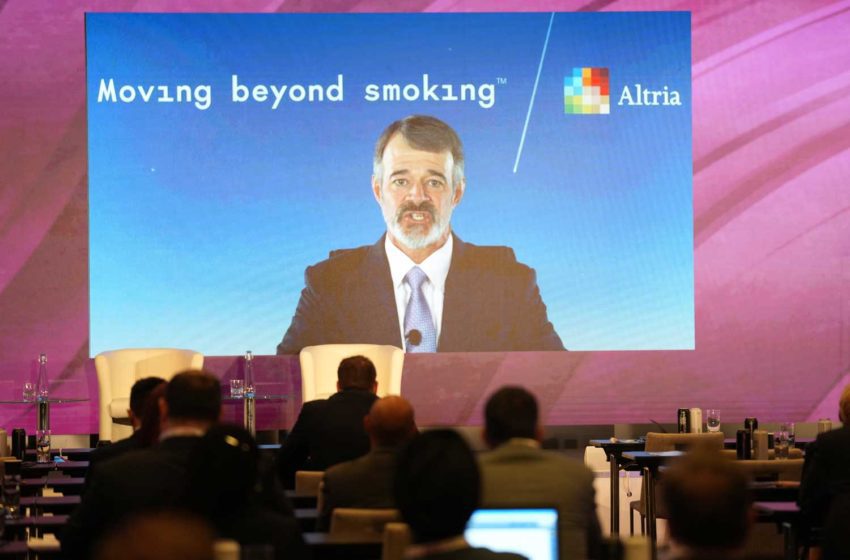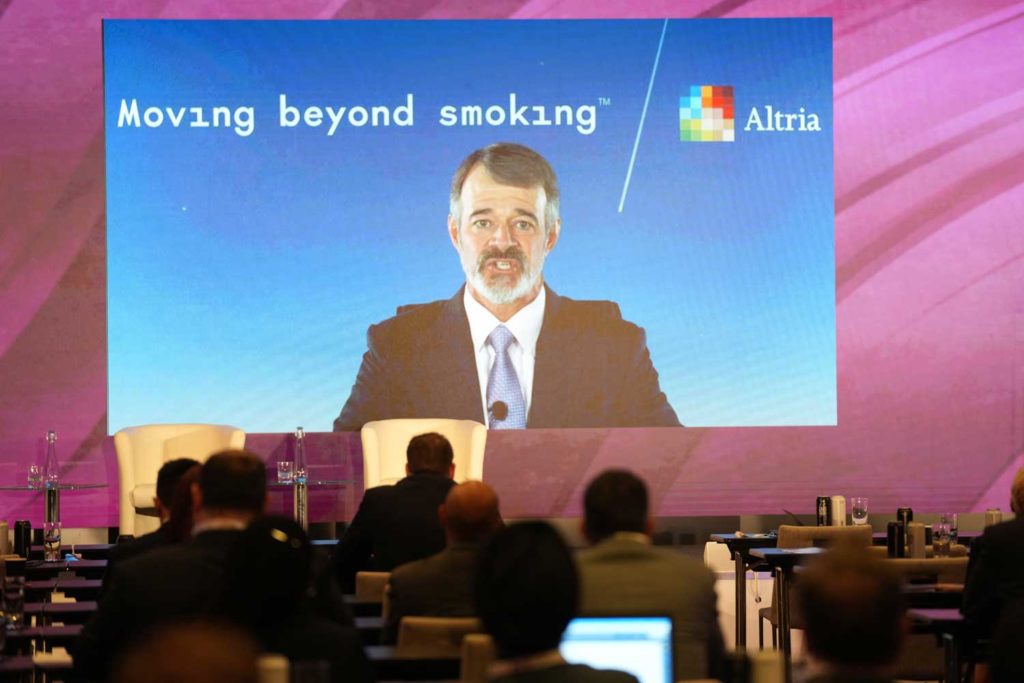William Gifford


Speaking through a video link at the 2021 Global Tobacco & Nicotine Forum in London, Altria Group CEO William Gifford explained why he believes it is possible to make more progress in tobacco harm reduction in the next 10 years than has been achieved over the past 50 years.
Gifford said he was optimistic about the outlook for tobacco harm reduction in the U.S. He was encouraged not only by the U.S. Food and Drug Administration’s commitment to science but also by the growing support of tobacco harm reduction among public health advocates.
As an example, he pointed to a recent landmark article offering a rare balanced look at vaping in the U.S. Writing in the August issue of the American Journal of Public Health, 15 former presidents of the Society for Research on Nicotine and Tobacco (SRNT) recognized the benefits of vapor products.
Meanwhile, data from the National Youth Tobacco Survey suggest that underage vaping, while still high, shows signs of decline. Underage use of traditional tobacco products remains at historical lows. The minimum age to purchase tobacco products has been raised to 21, and many states are considering and implementing lower rates of taxation for FDA-authorized reduced-risk products. Risk-proportionate taxation is important, according to Gifford. “We must not impede consumer switching,” he said.
Despite his optimism, Gifford also detected headwinds. He identified four areas where progress was still needed: correcting misperceptions about nicotine, ensuring that harm reduction is equitable, allowing for real and meaningful scientific engagement between industry and public health, and ensuring that harm reduction is an off-ramp for adult smokers and not an on-ramp for underage tobacco use.
Nicotine, Gifford reminded his audience, is not the primary cause of disease and death from smoking; rather, it’s the combustion of the tobacco—so it makes sense to transition adult smokers who can’t or won’t quit from the most harmful form of nicotine consumption to a less risky alternative.
While the risk continuum is today widely embraced by public health, the scientific community and the regulator, many smokers—the people who most stand to benefit—don’t understand the concept. Seventy-three percent of people either incorrectly believe nicotine is the main substance in cigarettes that cause cancer or are unsure. Eighty percent of surveyed physicians in a recent study strongly agreed that nicotine directly contributes to the development of cardiovascular disease, COPD and cancer. Left unaddressed, said Gifford, these widespread nicotine misperceptions could discourage adult smokers from switching to smoke-free tobacco products.
Industry has an important role to play, he noted. “It’s on us to conduct the science and seek MRTP [modified-risk tobacco product] authorization claims to persuade adult smokers about the benefits of switching to smoke-free products,” said Gifford. “But industry alone cannot correct nicotine misperceptions,” he added. “FDA has said, ‘we need a national debate on nicotine.’ We agree; we think FDA is best positioned to lead it. That’s why we recently asked the agency to launch a targeted public education campaign geared toward adult smokers about nicotine misperceptions.”
Access to tobacco harm reduction must also be more equitable, according to Gifford. A recent study among Black, Asian, Hispanic and LBGTQ+ communities revealed that a greater proportion of those groups mistakenly identified nicotine as the chemical that causes cancer. What’s more, Altria’s own data shows that Black, Hispanic and female adult smokers lag behind white male adult smokers in transitioning to smoke-free products.
A comprehensive approach to harm reduction means that all smokers, regardless of background, demographics or financial means, have equitable opportunities to reduce the harms of smoking, according to Gifford. While not claiming to have all the answers, he insisted that Altria was committed to engaging and listening.
“We face an unprecedented opportunity for America to lead the way in shifting millions of smokers away from cigarettes if we follow the science, support innovation and clearly communicate scientifically accurate information,” he said.
Getting the best possible science and data to guide policy decisions, he said, requires more than well-designed studies or lab work; it requires peer-to-peer engagement, review and open-minded inquiry. However, many organizations are seeking to exclude industry from scientific forums and research. For example, the National Institute on Drug Abuse discourages industry participation in harm reduction research. The SRNT recently decided to ban industry employees from attending and sharing their science at its annual conference.
“In this situation, nobody wins—not science, not good policy and certainly not adult smokers,” said Gifford. “We stand by our science and make it a point to welcome good faith scrutiny. If there is one lesson we all learned during the pandemic, it is the importance of science-driven communications.”
Gifford related how he’s often asked when the last cigarette will be smoked in the U.S. “The honest answer: It depends,” he said. As variables, he cited industry innovation, regulatory legislative policy, whether adult smokers can get the smoke-free products they like and whether adult smokers get accurate information on smoke-free products.
“But I am confident we can make real progress if we engage, listen and act,” he concluded.
